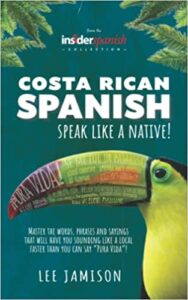Ankiapp vs Anki
Ankiapp vs Anki
Ankiapp and Anki are two popular flashcard apps that are commonly used by language learners to help them memorize vocabulary and phrases in their target language. Both of these apps use the spaced repetition method, which helps to reinforce the material that the user is trying to learn by presenting it to them at increasing intervals of time. In this article, we will compare Ankiapp and Anki to help you decide which one is the best option for learning Spanish.
One of the key differences between Ankiapp and Anki is the way that they present the flashcards to the user. Ankiapp uses a more interactive approach, with colorful graphics and audio clips to help engage the user and make the learning process more fun. Anki, on the other hand, uses a more traditional approach, with plain text on the front and back of each flashcard. This makes Anki a better option for users who prefer a more straightforward and no-frills learning experience.
Another important difference between the two apps is the way that they handle the spaced repetition algorithm. Ankiapp uses a custom algorithm that takes into account the user’s performance on each flashcard, as well as their overall progress in the language. This allows Ankiapp to adapt to the user’s needs and present the flashcards at the optimal intervals for maximum retention. Anki, on the other hand, uses a fixed spaced repetition algorithm that is the same for all users. This means that some users may find that the flashcards are presented too frequently or not frequently enough, depending on their individual learning pace.
One of the biggest advantages of Ankiapp over Anki is its user-friendly interface. Ankiapp has a clean, modern design that is easy to navigate and use, even for users who are new to language learning apps. In contrast, Anki has a more cluttered and complex interface that can be intimidating for beginners. This makes Ankiapp a better option for users who want an app that is easy to use and doesn’t require a lot of technical knowledge.
Another advantage of Ankiapp is its integration with other language learning resources. Ankiapp has a built-in dictionary and verb conjugator, as well as a feature that allows users to look up words and phrases on Wikipedia. This makes it easy for users to expand their vocabulary and learn more about the language and culture. Anki, on the other hand, does not have these features and relies on users to import their own flashcards from other sources.
When it comes to pricing, Ankiapp and Anki are similar. Both apps offer a free version that allows users to create and use a limited number of flashcards. Ankiapp also offers a premium version that unlocks additional features, such as the ability to create an unlimited number of flashcards, access to the verb conjugator and dictionary, and the ability to import flashcards from other sources. Anki also offers a paid version that unlocks additional features, such as the ability to create an unlimited number of flashcards, access to advanced study options, and the ability to import flashcards from other sources.
In conclusion, Ankiapp and Anki are both excellent options for learning Spanish. Both apps use the spaced repetition method to help users memorize vocabulary and phrases, and both offer a free version for users to try out. However, Ankiapp has a more user-friendly interface and integrates with other language learning resources, making it a better option for users who want an easy-to-use app that offers a more comprehensive learning experience.
